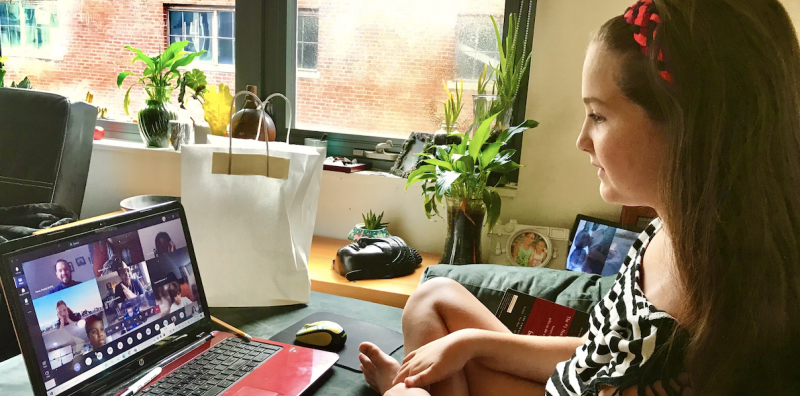“No child should be left offline” is more than a mantra for Nicol Turner Lee. This belief is core to who she is and what drives her to research the connections between public policy and enabling equitable access to technology across the U.S.
In many ways, no child left offline is her call to action for all communities to consider who is increasingly disadvantaged in our digital economy, especially school-aged children.
“I think that part of the realization that we’re coming out of the pandemic with is that we are truly in a digital society,” said Turner Lee, a Senior Fellow in Governance Studies and the Director of the Center for Technology Innovation at the nonprofit Brookings. “And when you’re in a digital society you have to renew the social contract of making sure your citizens are connected, or else they cannot truly benefit from being online as opposed to being in line.”
GovLoop recently sat down with Turner Lee as part of a month’s long editorial project looking at the intersection of technology and equity and how both converge to improve access to government services. We’re also revisiting key points she made during a recent keynote at Laserfiche’s Empower Conference in late February. The goal is to assist those in government who are grappling with how best to deliver equitable services to the public.
Here are some key takeaways from a joint interview with Turner Lee and Laserfiche Chief Information Officer Thomas Phelps IV.
1. Build on lessons learned as the new digital marketplace evolves.
Transformation is already happening, and governments can’t afford to fall behind. Turner Lee stressed the importance of not forgetting the painful lessons learned during the pandemic, such as adequately investing in remote health care and learning, to move the ball forward.
2. Consider the long-term maintenance of investments made with relief funds.
The surge of relief funding has been especially critical for state and local governments to invest in housing, education and other areas of need. “[But] what happens in year two and year three and year four?” Phelps said. These are questions that hit home for Phelps, who lived below the poverty line growing up and relished the internet access and opportunities that public libraries provided.
Securing a sustainable source of funding to ensure that everyone who needs broadband access to learn, apply for jobs, upskill their talents, to engage in a virtual workforce can do so is vital. “Not just this year when this is on the top of everyone’s mind from the pandemic,” he said, noting that “we need different policies at the federal, state, and local level to make sure that from an equity perspective, that everyone, regardless of income, regardless of social status, has equal access to the internet.”
3. Plan for the next disruption now.
Many CIOs and K-12 staff put out a herculean effort to ensure students were connected and able to engage in remote learning, Tuner Lee said. “These are people who are not broadband champions,” she said. “These were CIOs that were primarily responsible for connecting the infrastructure of the school, who were now figuring out if people’s tablets worked at home or if they had portable Wi-Fi hot spots.”
What concerns her, though, is that these monumental efforts will be forgotten as more kids return to the classroom and funds are spent without considering resilience for future crises. “Today it’s the pandemic,” she said. “Tomorrow it’s a wildfire, the day after that it could be a resurgence of a variant.” Her point: There will be other events that force our nation to use technology for continuity of operations, including student learning, and no one should be left behind.
4. Educate yourself and read the fine print.
At the beginning of the pandemic, Turner Lee recalled superintendents and their deputies sending her contracts to read because they were on the verge of procuring a lot of IT equipment. They had worked closely with their tech teams to figure out the deployment and the infrastructure setup, but a lot of schools were butting heads with municipal laws that governed broadband networks.
“These are concerns that percolated during the pandemic, but they’re not going to go away,” she said.
5. Strengthen partnerships.
Although innovation is happening within the walls of institutions, it hasn’t necessarily permeated across communities, Turner Lee explained. “So it’s also important to bring some extra seats to that table, which might involve community organizations or faith-based organizations that sit alongside government employees.”
Phelps highlighted the work of Rebecca Kauma, a program manager for economic and digital inclusion in Long Beach, California, as an example. He shared how Kauma brought together public and private sector organizations to create programs that decrease the digital divide for low-income households. (You can learn more about her work here.)
“That’s what a city employee can do,” Phelps said, “advocate to create this role within their respective cities and counties and then bring together both the private sector and the public sector to work in partnership.





great article! Thank you!
Thank you!